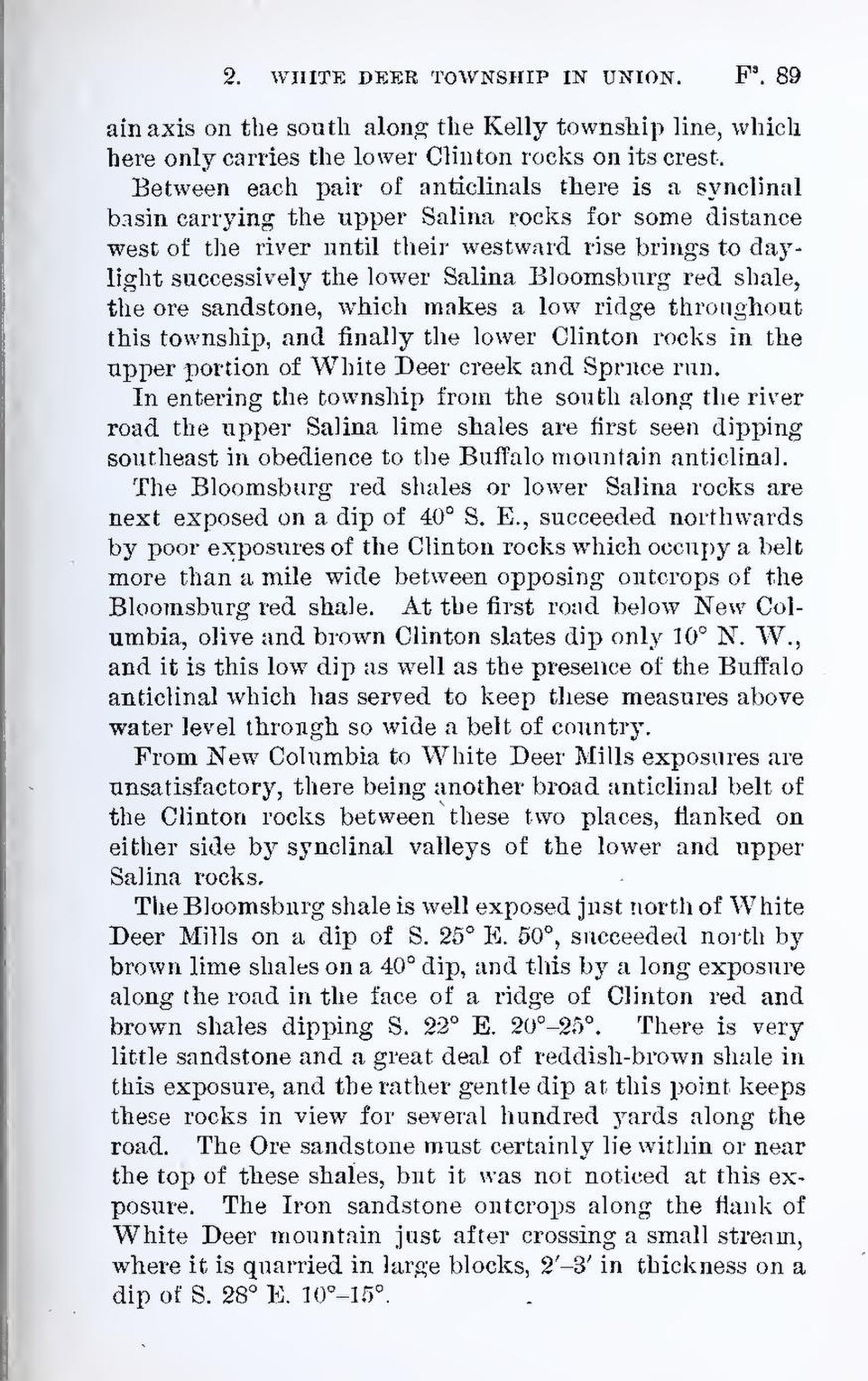ain axis on the south along the Kelly township line, which here only carries the lower Clinton rocks on its crest.
Between each pair of anticlinals there is a synclinal basin carrying the upper Salina rocks for some distance west of the river until their westward rise brings to daylight successively the lower Salina Bloomsburg red shale, the ore sandstone, which makes a low ridge throughout this township, and finally the lower Clinton rocks in the upper portion of White Deer creek and Spruce run.
In entering the township from the south along the river road the upper Salina lime shales are first seen dipping southeast in obedience to the Buffalo mountain anticlinal.
The Bloomsburg red shales or lower Salina rocks are next exposed on a dip of 40° 8. E., succeeded northwards by poor exposures of the Clinton rocks which occupy a belt more than a mile wide between opposing outcrops of the Bloomsburg red shale. At the first road below New Columbia, olive and brown Clinton slates dip only 10° N. W., and it is this low dip as well as the presence of the Buffalo anticlinal which has served to keep these measures above water level through so wide a belt of country.
From New Columbia to White Deer Mills exposures are unsatisfactory, there being another broad anticlinal belt of the Clinton rocks between these two places, flanked on either side by synclinal valleys of the lower and upper Salina rocks.
The Bloomsburg shale is well exposed just north of White Deer Mills on a dip of S. 25° E. 50°, succeeded north by brown lime shales on a 40° dip, and this by a long exposure along the road in the face of a ridge of Clinton red and brown shales dipping S. 22° E. 20°-25°. There is very little sandstone and a great deal of reddish-brown shale in this exposure, and the rather gentle dip at this point keeps these rocks in view for several hundred yards along the road. The Ore sandstone must certainly lie within or near the top of these shales, but it was not noticed at this exposure. The Iron sandstone outcrops along the flank of White Deer mountain just after crossing a small stream, where it is quarried in large blocks, 2′-3′ in thickness on a dip of S. 28° E. 10°-15°.
